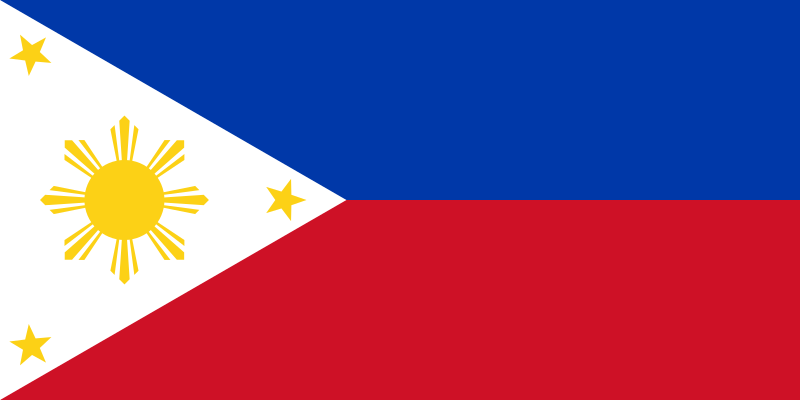 The Philippines (Filipino: Pilipinas [ˌpɪlɪˈpinɐs]), officially known as the Republic of the Philippines (Filipino: Republika ng Pilipinas), is a country in Southeast Asia in the western Pacific Ocean.
The Philippines (Filipino: Pilipinas [ˌpɪlɪˈpinɐs]), officially known as the Republic of the Philippines (Filipino: Republika ng Pilipinas), is a country in Southeast Asia in the western Pacific Ocean.
To its north across the Luzon Strait lies Taiwan. West across the South China Sea sits Vietnam. The Sulu Sea to the southwest lies between the country and the island of Borneo, and to the south the Celebes Sea separates it from other islands of Indonesia. It is bounded on the east by the Philippine Sea.
Its location on the Pacific Ring of Fire and its tropical climate make the Philippines prone to earthquakes and typhoons but have also endowed the country with natural resources and made it one of the richest areas of biodiversity in the world.
An archipelago comprising 7,107 islands, the Philippines is categorized broadly into three main geographical divisions: Luzon, Visayas, and Mindanao. Its capital city is Manila.
With an estimated population of about 92 million people, the Philippines is the world’s 12th most populous country. An additional 11 million Filipinos live overseas. Multiple ethnicities and cultures are found throughout the islands.
In prehistoric times, Negritos were some of the archipelago’s earliest inhabitants. They were followed by successive waves of Austronesian peoples who brought with them influences from Malay, Hindu, and Islamic cultures. Trade introduced Chinese cultural influences.
The arrival of Ferdinand Magellan in 1521 marked the beginning of an era of Spanish interest, and eventual dominance. Manila emerged as the Asian hub of the Manila–Acapulco galleon treasure fleet. Christianity became widespread.
As the 19th century gave way to the 20th, there followed in quick succession the short-lived Philippine Revolution, the Spanish-American War, and the Philippine-American War. In the aftermath, the United States replaced Spain as the dominant power.
Aside from the period of Japanese occupation, the United States retained sovereignty over the islands until the end of World War II when the Philippines gained independence. The United States bequeathed to the Philippines the English language and a stronger affinity for Western culture.
Since independence the Philippines has had an often tumultuous experience with democracy, with popular “People Power” movements overthrowing a dictatorship in one instance but also underlining the institutional weaknesses of its constitutional republic in others.

Notes from Wikipedia








